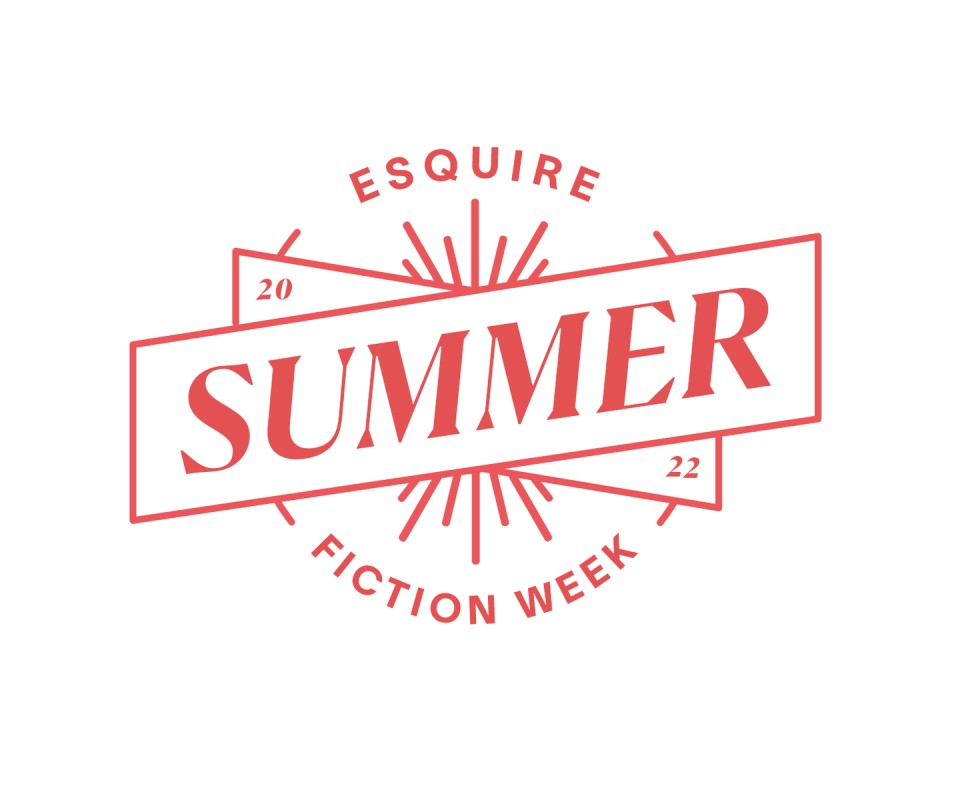Everything Everywhere All in One Novel



It’s a cliché to say that we live in science fictional times. But recently it’s felt like we’re living in every science fictional time simultaneously. The world’s richest man decides to purchase a global communications platform on a whim, then decides to back out on a whim. Climate change heat waves lead governments to patrol borders with robot dogs. Meanwhile, a global pandemic rages on, new dystopian technologies are unveiled every day, and the wealthy work on their plans to escape into space. When a scroll through the news reveals a dozen dystopian scenarios—and the daily tasks of work, life, and family trudge on—what’s a novelist who hopes to capture our reality to do?
Maybe novels must do everything too.
In the last couple of years, there’s been a wave of ambitious genre-bending novels whose wide scopes and wild imaginings reflect the surreal state of our times. I’ve come to think of the form as “the speculative epic.” “Speculative” is used here as an umbrella term for science fiction, fantasy, magical realism, and other fictional modes that imagine worlds different from ours. Examples of these speculative epics from the last two years include Emily St. John Mandel’s Sea of Tranquility, Matt Bell’s Appleseed, Anthony Doerr’s Cloud Cuckoo Land, Sequoia Nagamatsu’s How High We Go in the Dark, Monica Byrne’s The Actual Star, Vauhini Vara’s The Immortal King Rao, Hanya Yanagihara’s To Paradise, and Kim Stanley Robinson’s The Ministry for the Future. These novels vary in style and range from breakout debuts to works from established masters, but they all share an epic scope and the use of speculative premises to tackle the biggest concerns of our day.
Of course, authors have long used speculative conceits to explore very real-world issues. But what distinguishes these novels are two characteristics: first, the vast canvases they deploy to tackle equally immense issues like global inequality and climate change. Their narratives span hundreds or thousands of years with wide casts of characters and settings. The second defining feature is an omnivorous approach to genre. These novels can’t be pegged as simply “science fiction,” “literary fiction,” or “historical realism.” Instead, history, science fiction, family drama, fantasy, and more all mingle together.
Why has this form become so popular now? It may be that the claustrophobia of COVID lockdown has inspired authors to envision wider vistas. In Emily St. John Mandel’s Sea of Tranquility, an author of a pandemic novel finds herself living through a pandemic, much as Mandel did (her 2014 plague novel Station Eleven was a runaway hit). Rather than write a realistic autofiction novel, Mandel filtered her experiences through speculative fiction to create a time-travel narrative that stretches from 20th-century Canada to a 23rd-century moon colony. “I see Sea of Tranquility as very much a product of the pandemic,” Mandel told this magazine. “It's a book I don't think I would've written, if not for this weird time that we've all just lived through.”
However, most novels take many years to write, and most of these books were started long before the current pandemic. For Sequoia Nagamatsu, who published his lovely and mournful plague novel How High We Go in the Dark earlier this year, the timing was coincidental. Nagamatsu had been publishing chapters of the novel as short stories in literary magazines for over a decade. In How High We Go in the Dark, rising global temperatures melt Siberian permafrost and unleash an “Arctic plague” that decimates the global population. The novel details the myriad ways humanity deals with the resulting loss, from building funerary skyscrapers to escaping into the metaverse. How do we deal with grief in an ever-changing world, the novel asks?
“I think a reason why genre-bending or play has become more common is that we are, if we’re honest, living in the future,” Nagamatsu told me. “We are living in apocalyptic and dystopian times—our relationship with technology, virtual spaces, and various apocalyptic scenarios have become part of our everyday lives.”
In 2022, speculative fiction is realism. Or at the very least, speculative fiction is increasingly how we process our lives, whether it’s the surreality of the corporate grind with Severance or the threat of resurgent right-wing patriarchy with The Handmaid’s Tale. I mention these television series because literary trends are not divorced from the wider culture. These novels are part of a larger rise in speculative narratives challenging the biases of institutions that have long turned up their noses at genre.
Science fiction, fantasy, and horror have been popular for centuries. But for a long time, speculative narratives were walled off from “high art.” Genre was considered lowbrow, lightweight, pulp. A movie about wizards or a novel about robots might move units, but it would never be considered when awards season rolled around. Yet speculative artists kicked at the gates keeping them out for decades until eventually, the gates broke. The tipping point might be the mid-aughts when Lord of the Rings: Return of the King (2003) won the Academy Award for Best Picture, and Cormac McCarthy’s post-apocalyptic novel The Road (2006) won the Pulitzer Prize.
Now in 2022, it’s a given that the box offices will be filled with superhero and space flicks, and we aren’t surprised when the most acclaimed indie darling of the year is a wild metaverse fantasy like the brilliant Everything Everywhere All at Once. Meanwhile, high culture journals like The New Yorker profile living science fiction legends like N.K. Jemisin, and speculative novels compete for the most prestigious literary awards. While a few decades ago you might have expected an acclaimed novelist to write about sad professors having dreary affairs, these days it’s more likely their latest masterpiece will have magic, monsters, or dystopian tech.
Katherine Fausset, a literary agent who represents many genre-bending authors including Mandel, suggests the change is not coming from readers so much as writers. “I don’t think readers are increasingly interested in speculative or genre-bending fiction,” she said. “Instead, I think more writers are feeling free to create it. Whereas before they might have feared not being taken seriously, now, they don’t have to.”
The freedom of speculative writing attracts not only established novelists like Mandel, but also journalists writing their first fiction books. Before publishing her dazzling debut, The Immortal King Rao, Vauhini Vara worked as a technology reporter for The Wall Street Journal, Wired, and elsewhere. Her novel takes place in a future dystopian world in which governments have been replaced by algorithms and citizens are now “Shareholders.”
“I think science fictional and dystopian modes of writing often allow us to extrapolate into the future, based on how technology works now,” Vara said. “It can sometimes allow us to be more forward-looking than journalism is able to be; a responsible journalist can’t make wild guesses about what it would look like if an algorithm determined how the world was run, but, in my fiction, I can."
Between King Rao’s satirical explorations of big tech, Vara tells a moving family story that takes inspiration from her own family’s history. Vara’s father suggested she write a novel “about a Dalit family on a South Indian coconut grove like the one where he grew up.” She knew she wanted to combine this with her technology reporting and imagined King Rao, a man moving from 1950s India to start a tech company in 1970s America. Feeling unsure if she had the authority to narrate from King Rao’s perspective, Vara settled on the idea—inspired by the 2004 television series Battlestar Galactica—to include a daughter character whose brain has been technologically altered to access her father’s memories. The result is a novel that blurs any lines between satire, historical fiction, family drama, and dystopia.
This mingling of seemingly distinct genres is a key characteristic of what I’m calling the speculative epic. Perhaps this is another way these novels mirror our present. In the age of streaming TV, genre-mingling is a daily habit. One might come home from work and watch a true crime documentary followed by a superhero flick and a reality show. This mixing of voices and styles is also a feature of our social media, where jokes, polemics, news stories, and art all mingle in a single stream.
In a speculative epic, a chapter of researched historical fiction might be followed by a chapter of far future imaginings or fabulist allegory. An obvious forebearer is David Mitchell’s acclaimed 2004 novel Cloud Atlas, which was famous for its six nesting narratives that begin in the historical 19th century and end, chronologically, in a post-apocalyptic future. The success of Mitchell’s time jumping and genre hopping sent a signal that authors really could do it all. A novelist didn’t have to worry about following all the supposed rules of literary realism, hard science fiction, or anything else. The author could mix and match as they pleased.
You can see the influence of Cloud Atlas in works like Hanya Yanagihara’s ambitious To Paradise, which takes place in three different timelines: an alternative history 19th century, a more realistic 20th century, and a dystopian 21st century. Or consider Monica Byrne’s imaginative The Actual Star, which moves from 1012 Mayan civilization to 2012 and finally to a future 3012, when earth has been ravaged by climate change. There are also shades of Cloud Atlas in Anthony Doerr’s uplifting Cloud Cuckoo Land, which hops across hundreds of years from 15th century Constantinople to a future generation ship.
Another recent novel with a multi-timeline structure is Matt Bell’s Appleseed. This gorgeous eco-novel opens in the 1700s with a fabulist retelling of the Johnny Appleseed legend. In Bell’s version, there are two brothers, and one is a shapeshifting faun. The novel then skips ahead to a near-future narrative where a megacorporation is attempting to reverse global warming, and finally ahead to a far future where a cyborg named C-433 traverses an Earth in the grip of a new ice age. “I’m a genre agnostic,” Bell told me. “I love a lot of different kinds of fiction, and one way to get through the work of writing a novel is to fill it with the things you love.”
When it comes to the speculative epic, the freedom of genre-bending is matched with a seriousness of subject. The novels that fit this speculative trend cover many pressing topics, from wealth inequality to racism to the breakdown of our political institutions. But if there’s one theme that looms over everything, it is climate change, the quite literally global catastrophe that’s poised to change almost every aspect of life on earth. How can one tackle such a grand threat without a grand narrative?
Bell described his novel’s timespan as “a long clock” that allowed Appleseed to explore “different aspects of climate change, including the ways that ideas like capitalism, settler colonialism, manifest destiny, and techno-utopianism developed and appeared across time.”
How High We Go in the Dark is also deeply concerned with climate change and stretches far into the past and future. Nagamatsu had similar thoughts about the importance of a long clock: “When thinking about our role as one species on this planet (and one that has the unique role of steward), we need to consider geologic time scales to better understand our place on Earth, and how we’ve been interacting with our home in small and large ways.”
A third recent climate change novel, Kim Stanley Robinson’s The Ministry for the Future, approaches the topic with a shorter clock, yet a glorious polyphonic style. Composed of over a hundred chapters, the novel features countless narrators and approaches to the central theme. The core story is a more traditional science fiction narrative involving scientists and economists exploring near-future solutions to climate change, yet between those chapters, Robinson includes monologues, real world history, polemics, and allegorical chapters narrated by a carbon molecule, a caribou, and even the sun itself: “Some day I will eat you. For now, I feed you.”
In some ways, The Ministry for the Future feels like a reinvention of the novel itself, as if Robinson was seeing just how many literary forms can be included in a coherent narrative. In an interview with EW, he said he wanted readers to “start every chapter of this book not knowing what kind of chapter it’s going to be: essay, drama, dialogue, radio interview, riddle, etc. I want the reader of this book to have a sense of adventure, like what is the next chapter going to throw me?” The form also matches the content. When it comes to a planet-wide problem like climate change, you need an epic novel to match.
Climate change activists often talk about the problem of making people comprehend the danger we’re facing. One cannot simply look out the window and see the climate changing. Even among those of us concerned about climate change, it’s hard to grasp how decades of miniscule increases in average temperatures are accumulating into a threat to much of the life across the planet. The ever-flexible speculative novel might be the ideal form to bring the realities of climate change home.
The large canvas approach helps contextualize more than just climate change. Although we may like to think of our contemporary societal problems as new and unique, they all have deep histories. “You could say what’s happening now has its roots in the Industrial Revolution. But then you could go even further back—to the Renaissance, and before that, even to prehistoric times,” Vara told me. “And then you can look ahead and imagine how that arc will keep progressing.”
This is the power of the speculative epic. By showing us the past and imagining the future, these novels help us grapple with the long histories and varied sources of the systems that ensnare us. And given the grand scale of our problems, we can expect this literary trend to continue.
“As novelists look for new ways to confront the historical roots (and future implications) of problems like climate change or unlimited growth capitalism or systemic racism, we're going to see more long lens books,” Bell predicted. “You simply can't confront the long life of these ideas/issues in a single human lifetime.”
Ours is a strange and disorienting era. Its problems range from conspiracy theories to climate change, hate-spewing politicians to skyrocketing inequality. Meanwhile, technology continues to transform our lives at ever-accelerating paces, and ideas that once seemed like impossible science fiction, like self-driving cars or computer-to-brain interfaces, are becoming realities. In a world that seems to be going in every direction at once, these sprawling and ambitious novels can help us process and understand the issues we face. And, if we’re lucky, they can help inspire a better future.
You Might Also Like

